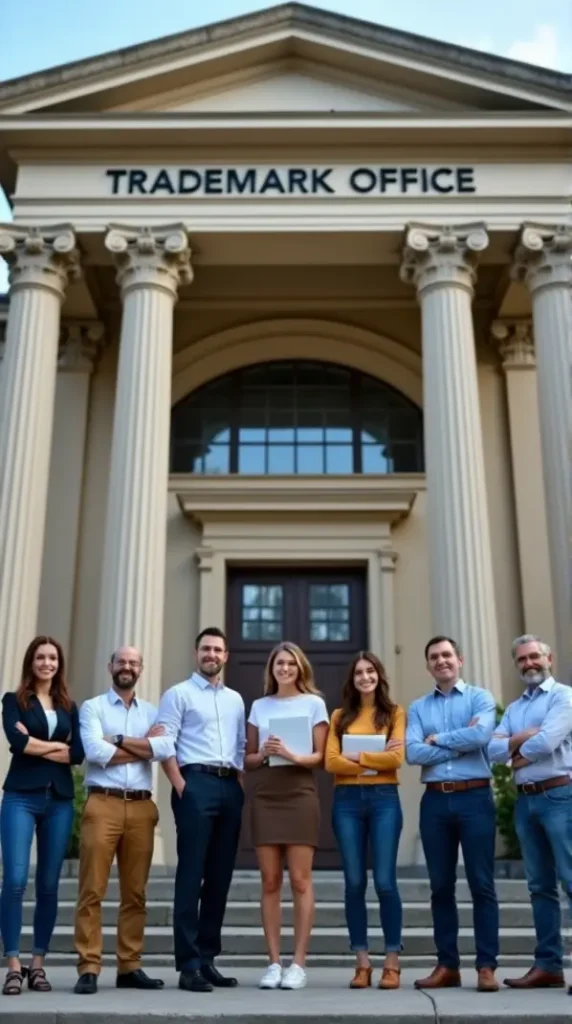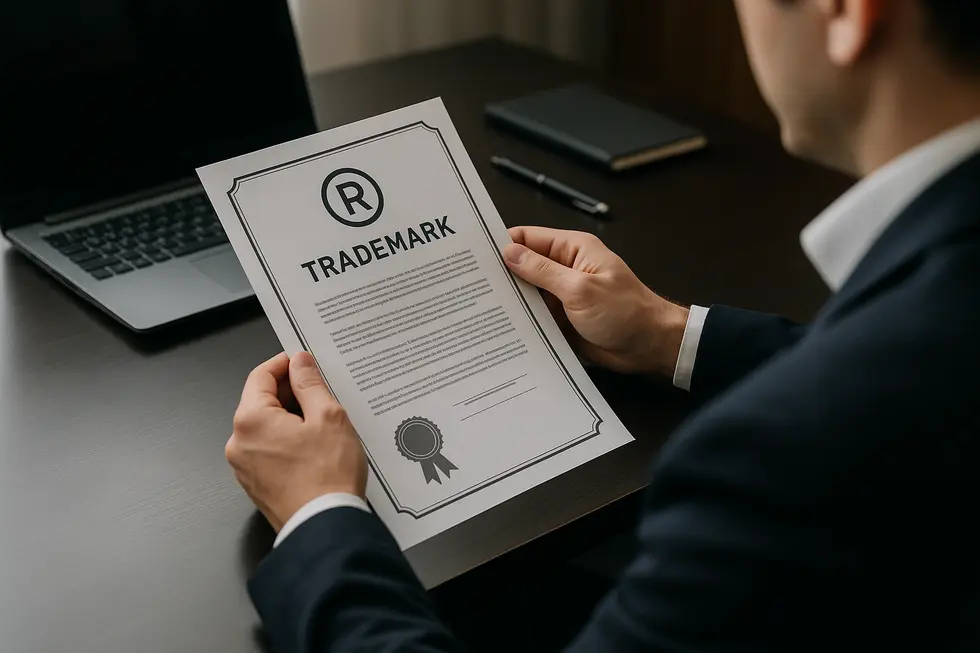导言
Protecting intellectual property is essential for any business seeking to establish and maintain a competitive edge. Copyright text plays a crucial role in asserting ownership of original works, such as logos, designs, written content, and images. While copyright protection arises automatically upon creation, displaying copyright text publicly reinforces your claim, deters unauthorized use, and can provide legal benefits. This guide explores the purpose and importance of copyright text for business owners, detailing its standard components, legal implications, effective website use, and international recognition. Each chapter deepens your understanding, equipping you to safeguard your creative assets with confidence.
目录
Chapter 1: The Purpose and Importance of Copyright Text
- How Copyright Text Fuels Creativity and Innovation by Protecting Original Works
- Copyright Text as a Shield for Creators’ Moral Rights and Legal Protections
- Economic and Cultural Dimensions of Copyright Protection Through Copyright Text
Chapter 2: Standard Formats and Components of Copyright Text
- Decoding Copyright Notices: The Essential Symbol, Date, and Ownership Elements
- How Copyright Text Clearly Defines Ownership and Protection in Books
- Crafting Clear Copyright Statements in Academic Works: Essential Elements for Legal Clarity
Chapter 3: Legal Implications and Benefits of Copyright Text
- Enforcement and Infringement: How Copyright Text Strengthens Legal Protection
- Harnessing Exclusive Rights: How Copyright Text Empowers Commercial Success and Drives Innovation
- Balancing Creator Rights and Public Access: Navigating Exceptions, Limitations, and Enforcement
Chapter 4: Best Practices for Using Copyright Text on Websites
- Navigating Legal Obligations and Ethical Responsibilities in Website Copyright Notices
- Effective Technical Strategies to Maximize Copyright Text Visibility and Protection on Your Website
- Navigating Copyright Infringement and Fair Use: Essential Considerations for Website Copyright Text
Chapter 5: International Recognition and Origins of Copyright Text
- From National Statutes to Global Treaties: The Evolution of Copyright Text’s Historical Foundations
- How Landmark International Treaties Established Global Standards for Copyright Text
- The Evolution of Global Copyright Frameworks and Their Role in Defining Copyright Text
Chapter 1: The Purpose and Importance of Copyright Text
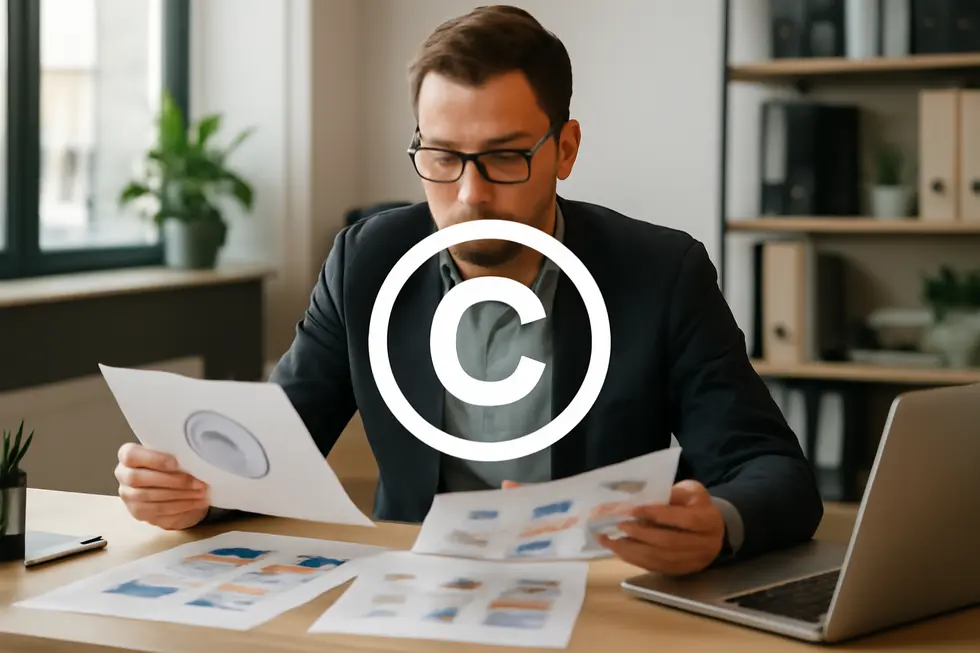
1. How Copyright Text Fuels Creativity and Innovation by Protecting Original Works
Copyright text is more than just a legal formality; it serves as a fundamental tool for fostering creativity and innovation. By clearly asserting ownership over original works, copyright text enables creators to maintain exclusive rights to reproduce, distribute, and publicly display their creations. This assurance of control provides a vital economic and moral incentive, motivating authors, artists, and inventors to invest their time and effort into new ideas and expressions.
The essence of copyright protection lies in its balance. While it grants exclusivity for a limited period, it ultimately ensures that creative works enrich the cultural commons when rights expire. This framework encourages continuous contributions to the arts and sciences, recognizing that rewarding creators today seeds innovations for tomorrow’s society. The U.S. Constitution emphasizes this goal, mandating copyright’s role in promoting progress and facilitating public access over time.
Underlying philosophical theories further clarify why copyright text is crucial. The Labour Theory justifies protection as a reward for intellectual effort, while the Personality Theory acknowledges that creative works embody an author’s personality and deserve moral safeguarding. The Utilitarian Theory highlights benefits to society by incentivizing new creations, and the Economic Theory addresses market needs, offering a mechanism to protect intangible assets without stifling access.
Thus, the inclusion of copyright text not only signals legal ownership but symbolizes an essential part of a system that respects creators’ rights and encourages the continuous flow of innovation. For anyone managing creative content, understanding this balance and the protective power of copyright text is key to sustaining a vibrant, evolving cultural environment. For further insight on intellectual property types linked to creative protections, see this detailed guide on categories of intellectual property rights.
More detailed legal context can be found through resources such as Cornell Law School’s overview of copyright law: https://www.law.cornell.edu/wex/copyright.
2. Copyright Text as a Shield for Creators’ Moral Rights and Legal Protections
Copyright text plays a pivotal role beyond simply signaling ownership. It embodies a protective shield for creators, securing both their economic interests and deeply personal moral rights. Moral rights safeguard the creator’s connection to their original work by ensuring proper attribution and guarding against any distortion or alteration that could damage their reputation. This protection is especially important as it preserves the integrity of the work and the creator’s personal legacy. Many jurisdictions recognize these rights to last indefinitely, underscoring their significance in maintaining the creator’s enduring relationship with their creation.
At the heart of copyright’s legal framework is a delicate balance. The law grants creators exclusive rights to reproduce, distribute, display, and adapt their works—allowing them meaningful control and opportunities to monetize their efforts. Simultaneously, copyright statutes curb this control with exceptions like fair use or fair dealing, which enable limited public use for purposes such as criticism, education, or commentary without the need for permission. This nuanced legal architecture promotes cultural development by protecting original expression while preventing monopolization of ideas.
This framework consistently defines what qualifies for protection: original expressions fixed in a tangible medium, not the underlying ideas. Such a distinction fuels creativity and innovation by encouraging new interpretations and builds upon existing knowledge without restricting intellectual progress. Including copyright text prominently on websites or creative works publicly asserts these protections and minimizes claims of innocent infringement.
The dynamic interplay between moral rights and exclusive economic rights within copyright’s legal structure fosters an environment where creators can thrive both personally and commercially. For businesses and artists alike, understanding these protections strengthens their ability to safeguard their work effectively. To explore how the legal system supports intellectual property broadly, consider an insightful resource about different categories of intellectual property rights 这里.
Further details on exceptions such as fair use are explored in various statutory frameworks and international treaties [1].
3. Economic and Cultural Dimensions of Copyright Protection Through Copyright Text
Copyright text is more than a simple label—it symbolizes the foundation of a complex system that fuels economic vitality and cultural richness. By clearly signaling ownership and the date of first publication, the copyright notice supports creators’ exclusive rights to reproduce, distribute, and adapt their original works. These exclusive rights act as a legal monopoly that incentivizes investment and effort, ensuring creators can monetize their intellectual property effectively and sustain their creative endeavors.
This protection has far-reaching effects beyond individuals, bolstering entire creative sectors such as publishing, music, film, and digital media. These industries rely on the certainty that copyright confers, enabling them to generate revenue that supports jobs, innovation, and technological development. Copyright text helps prevent unauthorized exploitation, reducing financial risks and strengthening the marketplace for creative content.
On a societal level, copyright underpins cultural diversity by encouraging the continuous production of new works while respecting creators’ moral rights, such as attribution and integrity of the work. It strikes a balance between protecting original expression and allowing public access to ideas and facts, which can foster education and cultural exchange. This dynamic encourages societal progress, making creative innovation a recognized and rewarded contribution to collective knowledge and heritage.
Moreover, the presence of copyright text informs the public and potential users, deterring infringement and facilitating proper licensing and usage agreements. Although copyright protection arises automatically, a clearly placed copyright notice serves as an important reference point in legal disputes and helps reduce claims of innocent infringement.
In summary, copyright text plays a pivotal role in economic growth and cultural preservation. It sustains creative industries financially while nurturing an environment where cultural heritage can be responsibly shared and expanded. For a deeper understanding of how copyright intertwines with business protections, see this comprehensive guide on copyright protection and automatic registration.
Reference: [1] Copyright protection frameworks and their benefits to creators and industries.
Chapter 2: Standard Formats and Components of Copyright Text
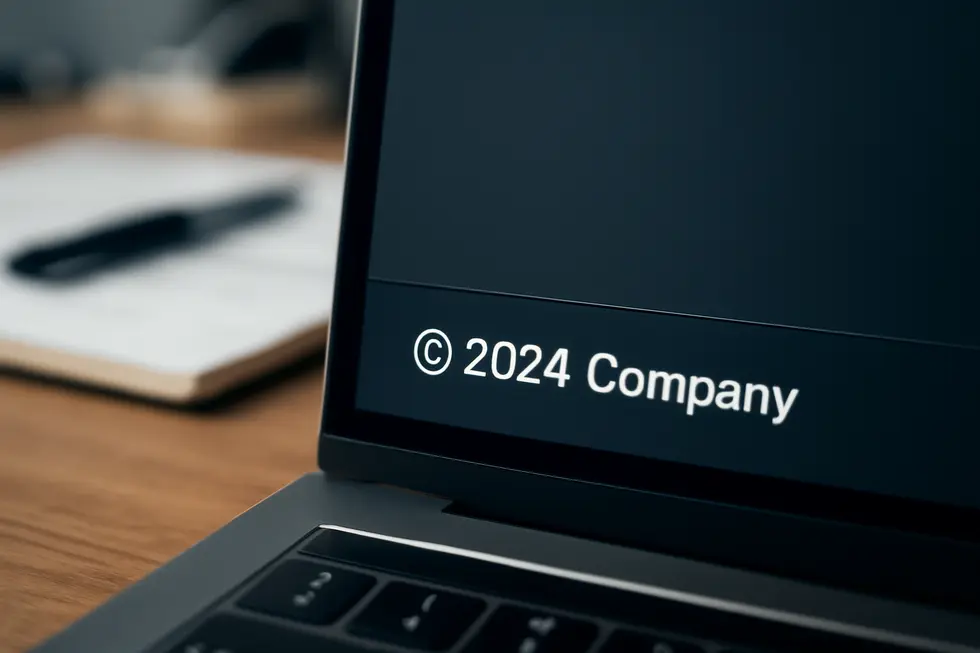
1. Decoding Copyright Notices: The Essential Symbol, Date, and Ownership Elements
At the heart of every copyright notice lies a simple yet powerful trio of components that communicate essential ownership and protection details. The copyright symbol ©, a circled letter C, serves as the most universally recognized indicator of copyright claims. While alternative designations such as the word “Copyright” or the abbreviation “Copr.” exist, the symbol © remains the most concise and internationally accepted form. Adjacent to this symbol, the year or range of years denotes when the original work was first published and, if applicable, subsequent years that indicate ongoing publication or updates. For instance, a range like 2013–2023 signals continuous or related publication events within that timeframe, clarifying the period covered by the copyright. Finally, the name of the rights holder explicitly identifies who claims ownership of the intellectual property. This can be an individual’s full legal name, a corporate entity, or a commonly recognized abbreviation. This element is crucial for establishing clear legal responsibility and authority over the creative work.
Combined in the standard format—for example, © 2013–2023 John Smith Photography—these elements create a legally informative statement that asserts exclusive rights such as reproduction, distribution, and public display. Including this notice prominently on every page or item featuring protected material is a best practice, minimizing ambiguity about ownership and discouraging unauthorized use. Moreover, it can strengthen a copyright holder’s position in legal disputes by eliminating claims of innocent infringement.
While not mandatory for copyright protection to exist, consistently displaying this standardized text is a practical tool for creators and businesses to protect their works. It bridges the legal protections granted automatically and the practical realities of enforcing those rights. For a deeper understanding of copyright notices and their role within intellectual property, exploring how copyrights interact with trademarks and other protections is useful, as discussed in resources like the copyright text overview.
2. How Copyright Text Clearly Defines Ownership and Protection in Books
Copyright text in books acts as a fundamental tool to formally communicate ownership and the scope of legal protection for creative content. Its presence in the front matter, typically on the verso of the title page, signals to readers and potential infringers alike that the work is protected by copyright law. Despite copyright protection arising automatically upon creation, including a clear copyright notice remains an essential best practice to establish public awareness and strengthen legal enforceability.
The standard format used within books follows a consistent pattern: it begins with the copyright symbol ©, or alternatively the word “Copyright” or the abbreviation “Copr.”, immediately followed by the year of first publication. When multiple years are relevant—such as for revised editions or collections—the notice may indicate a range (e.g., 2013–2023). Finally, the copyright holder’s name or recognized abbreviation completes the statement. For instance, a proper notice might read: © 2023 Jane Author Publishing. This uniform structure helps prevent ambiguity over ownership and publication timelines.
In academic works, including theses and dissertations, the copyright text is incorporated alongside other vital front matter elements like the abstract and acknowledgments, clearly delineating who holds rights to reproduction and distribution. Though not mandatory, its inclusion can impede defenses based on innocent infringement and may reduce damages in infringement litigation. Crucially, this text functions as a safeguard by making copyright claims explicit and accessible to all users.
Given the increasing digital dissemination of books, placing copyright notices on every page or section containing protected content further emphasizes ownership rights. This comprehensive approach strengthens copyright assertions and supports maintaining clear records of intellectual property claims.
For more details on effective copyright statements, one may refer to appropriate guidance on copyright information for books.
3. Crafting Clear Copyright Statements in Academic Works: Essential Elements for Legal Clarity
Copyright statements in academic works are a critical element within the broader framework of copyright text, serving to clearly define ownership and usage rights. These statements typically identify the copyright holder—most often the author—unless ownership has shifted to a publisher, sponsor, or institution. For example, graduate theses and dissertations commonly retain copyright with the student author unless specific transfer agreements apply.
Beyond ownership declaration, these statements specify the exclusive rights reserved to the copyright holder. Such rights include reproduction, distribution, and public display of the academic material. When rights have been reassigned or shared, the copyright text must precisely outline which rights remain with the author and which are licensed to other entities. This clarity protects the author’s intellectual property while ensuring proper acknowledgment of permissions.
Academic copyright statements often also disclose any permissions or licensing conditions accompanying the work. For instance, some academics choose to release their work under Creative Commons licenses, openly granting certain reuse rights while retaining others. Alternatively, permissions might be explicitly required for reusing images, tables, or previously published sections, safeguarding against unauthorized reproduction.
In addition, many academic works include fair use disclaimers, emphasizing that citation alone does not replace formal permission requests. These disclaimers remind users that legal fair use has defined, nuanced criteria.
When academic works are published through digital repositories or commercial databases, copyright statements frequently confirm that authors grant non-exclusive rights for reproduction and distribution without relinquishing ownership. This facilitates scholarly sharing and preserves the author’s control over their work.
Ultimately, thoughtfully crafted copyright statements offer transparency in legal rights, foster responsible use, and uphold the integrity of academic publishing. Universities and research institutions often provide tailored guidance and recommend consulting legal experts to construct compliant and effective copyright declarations.
For deeper understanding, refer to detailed guidance on copyright agreements in academic publishing.
Chapter 3: Legal Implications and Benefits of Copyright Text
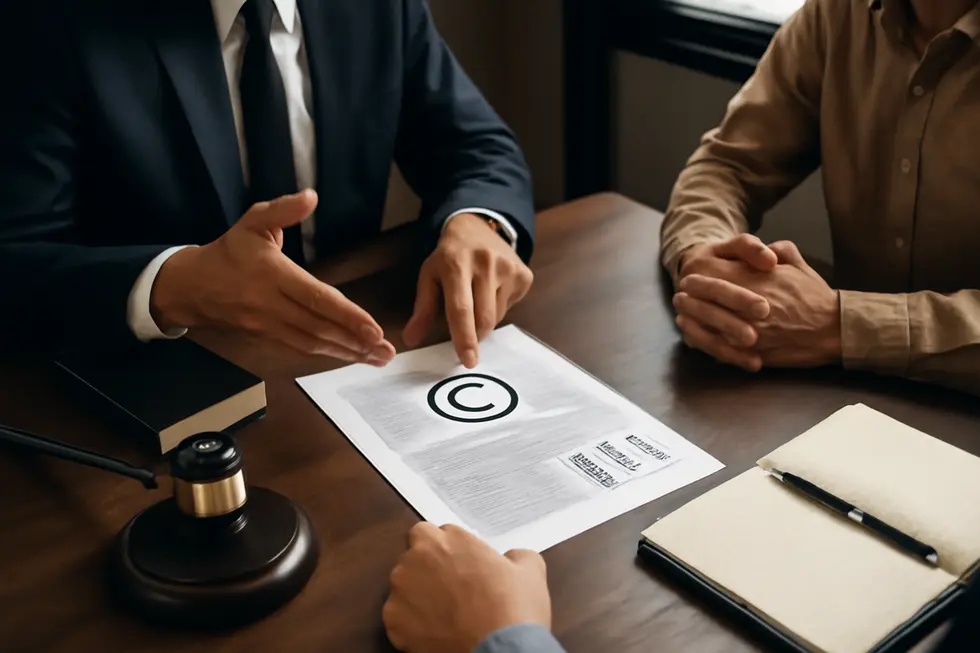
1. Enforcement and Infringement: How Copyright Text Strengthens Legal Protection
Copyright text plays a crucial role in the enforcement of intellectual property rights, serving as a clear public declaration of ownership and the date of first publication. While copyright protection arises automatically when a work is created in a tangible form, the presence of a copyright notice helps assert and preserve these rights effectively. When unauthorized use or infringement occurs, copyright holders can issue infringement notices demanding the removal of offending content before escalating to litigation. Such proactive enforcement preserves legal standing, enabling more robust claims in court if necessary.
Legal consequences of infringement are significant and varied. They include cease-and-desist orders, takedown requests filed with digital service providers, monetary damages, and potentially criminal penalties in severe cases. Importantly, these penalties apply regardless of whether the infringer gains financial profit, underscoring the broad scope of copyright law in protecting original works. Failure to enforce rights promptly can weaken a creator’s position, making copyright text not only a deterrent but a strategic tool for upholding legal claims.
Beyond enforcement, copyright also incentivizes creativity by granting exclusive rights to control reproduction, distribution, and public display. These exclusive rights are balanced by socially valuable exceptions like 合理使用, which permits limited use for commentary, criticism, teaching, or research. However, fair use is fact-specific and complex, with misuse potentially leading to infringement liability. Commercial exploitation under fair use further heightens legal risks.
Together, the enforcement mechanisms supported by copyright text and the careful balancing of rights encourage both protection and responsible use of creative works. For comprehensive guidance on enforcement and fair use nuances, authoritative legal resources provide valuable insights.
For more detailed information on these legal processes, see the Antares Systems guide on copyright and fair use for websites.
2. Harnessing Exclusive Rights: How Copyright Text Empowers Commercial Success and Drives Innovation
Copyright text serves as a tangible assertion of creators’ exclusive rights, underpinning the legal framework that protects original works. These rights grant creators control over reproduction, distribution, public display, and the creation of derivative works, effectively guarding against unauthorized use. Although copyright protection arises automatically upon creation, the copyright notice functions as a public declaration, reinforcing ownership and strengthening legal claims in infringement cases.
The assurance of exclusive rights enables creators and businesses to fully commercialize their intellectual property. Licensing agreements and sales rights open revenue channels that can sustain and expand creative ventures. This economic potential motivates investment in developing new content or technologies. For example, exclusive licensing can create competitive advantages and encourage licensees to innovate through new products or artistic expressions.
Beyond direct commercialization, copyright text contributes to broader innovation incentives by guaranteeing financial recognition to creators. This reward system encourages continuous creative efforts, fostering an environment where new ideas and works flourish. By signaling enforceable rights, the copyright notice deters potential infringers, supports legal enforcement actions, and thus helps maintain the delicate balance between protecting creators and promoting access.
However, this system requires careful oversight to avoid anti-competitive practices, particularly in the context of patents where licensing exclusivity might inhibit market competition. The legal mechanisms empowered by copyright text thus serve a dual role—not only protecting creators’ interests but also sustaining a fair and dynamic marketplace that fuels innovation.
For further insights into managing intellectual property rights effectively, exploring how different protections like trademarks complement copyright can be beneficial, as detailed in categories of intellectual property rights.
More about enforcement of these rights and balancing innovation incentives is discussed in external legal resources such as those provided by authoritative intellectual property organizations.
3. Balancing Creator Rights and Public Access: Navigating Exceptions, Limitations, and Enforcement
Copyright text plays a pivotal role in asserting exclusive rights for creators, granting them control over reproduction, distribution, and adaptation of their original works. While these rights are legally enforceable through infringement lawsuits and takedown notices, their effective protection depends on the copyright holder’s active enforcement efforts. Including a clear copyright notice helps deter unauthorized use and supports legal claims by signaling ownership.
Still, copyright law recognizes the need to balance creators’ interests with the public good. Exceptions and limitations such as fair use allow certain uses without permission, enabling transformative activities like criticism, commentary, education, and research. These exceptions act as important quality control mechanisms by preventing copyright holders from monopolizing facts, ideas, or commonly used elements, thus fostering innovation and wider dissemination of knowledge.
The benefits of copyright extend beyond protection by empowering creators to license their works commercially. This ability not only provides financial incentives but also encourages ongoing creativity, as creators retain limited-time exclusive rights. For example, original text in contract templates can be safeguarded to prevent direct copying, reinforcing the value of creative input even in seemingly functional documents.
In this framework, the careful balance between strong copyright enforcement and well-defined exceptions supports a healthy creative ecosystem. It safeguards legitimate interests without stifling access or undermining fair transformative use. For further insights into protecting intellectual property, particularly in complex legal landscapes, exploring categories of intellectual property rights can offer valuable guidance.
External resources such as the U.S. Copyright Office provide detailed information on how these rights and exceptions operate in practice, helping creators and the public alike understand this nuanced legal terrain.
Chapter 4: Best Practices for Using Copyright Text on Websites

1. Navigating Legal Obligations and Ethical Responsibilities in Website Copyright Notices
Effectively using copyright text on websites requires a careful balance of legal obligations and ethical responsibilities to respect content ownership while safeguarding your site. Legally, securing proper licenses or explicit permissions before incorporating third-party copyrighted text is essential. This proactive step prevents infringement claims and builds a foundation of trust with content creators. Where applicable, open-license materials, such as those under Creative Commons, offer valuable opportunities—but use them strictly within the license terms, including required attribution and restrictions on commercial use.
Understanding the nuances of the fair use doctrine is critical. Though fair use permits certain uses like commentary, criticism, and scholarship, it is context-dependent and involves factors such as the amount of text used and impact on the original work’s market. Relying solely on fair use without careful assessment can expose website owners to legal risk.
Ethically, giving proper credit to original authors and rights holders is non-negotiable. This respect maintains professional integrity and prevents plagiarism, which undermines both your reputation and the rights of creators. Additionally, website operators should consider balanced enforcement when moderating user-generated content that involves copyrighted text. Thoughtful review can protect legitimate fair use and educational purposes, while still honoring copyright holders’ interests.
Maintaining detailed records of all usage permissions safeguards against future disputes and supports good intellectual property stewardship. When producing your own content or sourcing it under clear ownership terms, you reduce legal risks and reinforce authenticity. For websites that also feature music or other media, securing appropriate performance rights is equally important to avoid penalties.
For those seeking to deepen their understanding of these matters, exploring resources like the U.S. Copyright Office’s Fair Use page can provide authoritative guidance. Additionally, practical insights from a copyright compliance business guide can enhance your approach to respecting and managing copyright text effectively. This combined legal and ethical mindfulness fosters a responsible, transparent web presence that safeguards creativity and builds credibility.
2. Effective Technical Strategies to Maximize Copyright Text Visibility and Protection on Your Website
Ensuring the effective technical implementation and clear visibility of copyright text on your website is crucial for establishing ownership and deterring unauthorized use. A well-placed copyright notice typically appears in the footer of every page, explicitly stating the copyright symbol ©, the year of first publication, and the name of the copyright owner. This consistent visibility serves as a clear reminder of rights held, discouraging infringement attempts.
Beyond mere placement, linking the copyright notice to a comprehensive Terms of Use or Terms and Conditions page strengthens your legal position. This page should articulate the scope of permitted use and outline consequences for violations, providing transparency and reinforcing your copyright claims.
It’s vital to meticulously identify all copyrightable elements—texts, images, graphics—and mark them appropriately with copyright information. For valuable images, adding subtle watermarks enhances protection by discouraging unauthorized copying while preserving the user experience. Maintaining thorough documentation of content sources, licenses, and permissions supports compliance and aids in any necessary enforcement actions.
Implementing automated monitoring tools can help detect potential infringements promptly, allowing swift responses such as DMCA takedown procedures or licensing negotiations. This proactive approach limits potential damage and showcases your commitment to protecting your intellectual property.
Lastly, while accessibility and privacy compliance do not directly affect copyright text, they build trust and professionalism, indirectly bolstering respect for your site’s legal notices. Training your team on copyright fundamentals ensures proper attribution and reduces accidental misuse.
Together, these integrated technical measures and visibility strategies create a comprehensive framework to safeguard your website’s creative content effectively. For further guidance on copyright management in business, consider exploring agreement copyright business.
3. Navigating Copyright Infringement and Fair Use: Essential Considerations for Website Copyright Text
Effectively handling copyright infringement and fair use issues is crucial for implementing best practices with copyright text on websites. While copyright protects original works automatically, fair use provides a legal framework to use limited portions of copyrighted material without permission for purposes such as commentary, criticism, or education. Understanding and applying this balance helps website owners respect creators’ rights while utilizing valuable content.
The determination of fair use depends on four critical factors: the purpose and character of the use, the nature of the copyrighted work, the amount used, and the effect on the work’s market. Uses that are noncommercial or transformative—such as adding new meaning or context—tend to favor fair use. Likewise, employing factual or published materials rather than unpublished creative works improves the likelihood of fair use protection. It is also important to only use small, necessary parts of a work, avoiding the “heart” of it, and to ensure that such use does not harm the potential market for the original.
Website owners should make fair use evaluations on a case-by-case basis for each piece of content, carefully documenting their reasoning to provide evidence if faced with legal challenges. When uncertainty persists, seeking permission from rights holders is advisable to mitigate liability risks.
Leveraging public domain and Creative Commons-licensed materials can greatly reduce copyright concerns while still enriching website content, though proper attribution remains essential. Staying informed about legal precedents, such as through the U.S. Copyright Office’s Fair Use Index, equips site administrators to make sound decisions related to fair use.
By integrating thoughtful fair use analysis with transparent copyright text usage, websites can responsibly manage protected content and reduce infringement risks. For a comprehensive overview tailored specifically to websites, see this detailed copyright and fair use guide.
Chapter 5: International Recognition and Origins of Copyright Text
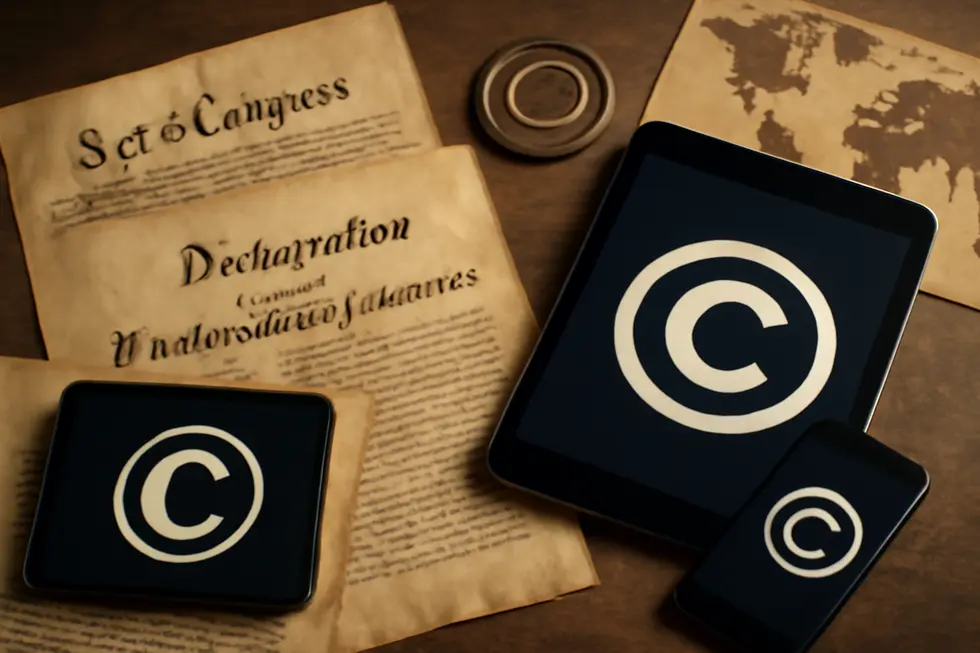
1. From National Statutes to Global Treaties: The Evolution of Copyright Text’s Historical Foundations
The roots of copyright text and its international recognition trace back centuries, evolving from early national statutes to comprehensive international agreements. The journey began with seminal laws such as the British Statute of Anne in 1709, which was the first to formally grant authors legal protection for their original works for a limited time. This statute laid a foundation by recognizing copyright as a statutory, rather than perpetual common law, right—a principle later affirmed in the 1774 Donaldson v Beckett case that emphasized copyright’s finite duration and the importance of public access once protection expires.
As creative works began to circulate beyond borders, the need for international consensus became clear. This led to the historic Berne Convention of 1886, the first global treaty to harmonize copyright laws. It introduced pivotal concepts that still shape copyright text today: automatic protection upon creation without formalities, equal treatment of foreign authors, minimum protection periods (typically the author’s life plus 50 years), and recognition of moral rights. The Convention’s rejection of any formal registration requirement marked a significant shift, ensuring creators worldwide enjoyed immediate copyright protection.
Yet, some nations, notably the United States, initially adhered to more formal requirements for copyright recognition, which limited their full participation in Berne’s structure. To bridge these differences, the Universal Copyright Convention (UCC) was established in 1952 under UNESCO’s guidance, creating a tolerance for notice-based protection systems, famously endorsing the © symbol combined with the author’s name and publication year on works. This allowed broader international compliance while reinforcing the visibility of copyright ownership.
Alongside these treaties, organizations like BIRPI, founded in 1893 and later transformed into the World Intellectual Property Organization (WIPO) in 1967, have nurtured global governance of intellectual property rights, including copyright. Their stewardship underscores how copyright text, once a national concern, now forms part of an intricate international framework balancing creator rights and public interest.
For a thorough exploration of the © symbol and its origins, see this detailed resource from Britannica 这里.
This historical progression underscores the enduring importance of copyright text as a globally recognized indicator of ownership and protection—a foundation for safeguarding creative expression across nations, cultures, and legal systems.
2. How Landmark International Treaties Established Global Standards for Copyright Text
The international recognition of copyright text owes much to several foundational treaties that have shaped global copyright laws and practices. Among these, the Berne Convention of 1886 stands as the cornerstone, establishing the principle that copyright protection automatically applies once a work is fixed in a tangible form. This pivotal agreement eliminated the need for formal registration and introduced the principle of national treatment, ensuring foreign authors receive equal protection as domestic creators. It also set minimum protection terms and recognized moral rights, enabling creators to be acknowledged and to protect the integrity of their works.
Building on the Berne Convention, the TRIPS Agreement of 1994 introduced enforceability through the World Trade Organization, making copyright standards legally binding for its member countries. TRIPS strengthened the obligation to provide effective legal remedies and introduced trade-related sanctions to encourage compliance. This elevated copyright enforcement to an international trade concern, expanding protections beyond original creative works to economic realms.
In response to digital innovations and emerging challenges, the 1996 WIPO Copyright Treaty and the WIPO Performances and Phonograms Treaty modernized copyright protections for the internet era. These treaties address technological measures and anti-circumvention rules, enabling protection of digital content and performances across borders. They reflect the evolution of copyright text from a primarily physical context to one that encompasses digital dissemination.
Additionally, the Paris Convention of 1883, although focused mainly on industrial property, influenced international intellectual property frameworks through concepts like national treatment and priority rights. While many countries adhere to these treaties, disparities in enforcement and membership affect the uniformity of protection worldwide.
For those seeking a deeper understanding of international copyright frameworks, this detailed resource on international copyright laws and treaties offers valuable insights.
3. The Evolution of Global Copyright Frameworks and Their Role in Defining Copyright Text
The recognition and protection of copyright text rest on a profound international framework shaped over more than a century. This framework emerged from the need to harmonize laws protecting creative works across national borders, facilitating respect for authors’ rights worldwide. The pivotal starting point was the Berne Convention of 1886, the first binding treaty setting minimum standards for copyright protection among member countries. It emphasized automatic protection without formalities, a principle still fundamental today. Early treaties like Berne primarily reflected the interests of developed nations focusing on securing authors’ moral and economic rights.
Progressing through the 20th century, the formation of the World Intellectual Property Organization (WIPO) in 1970 marked a crucial turning point. WIPO’s role is central: it administers major treaties, including the Berne Convention and the WIPO Copyright Treaty of 1996, which specifically addressed challenges posed by digital technologies. This treaty expanded protection to cover rights related to digital reproduction and distribution, signaling an evolution in how copyright text is understood and enforced globally.
The WTO’s TRIPS Agreement, effective from 1995, introduced copyright into the global trade system by making protections legally enforceable under international trade law. While raising standards for copyright enforcement, TRIPS has sparked debates about equitable access, especially in developing countries. On a regional scale, frameworks such as the EU Directive on Copyright in the Digital Single Market (2019) reflect ongoing efforts to align regional laws with international norms, addressing new challenges accompanying digital content circulation and user rights.
Together, these international and regional initiatives form a complex yet essential foundation supporting the universal recognition and validity of copyright text. They ensure that copyright text continues to serve not only as a declaration of ownership and protection but also as a tool adapting to evolving technological and social landscapes. To understand copyright’s broader institutional role and history, exploring the World Intellectual Property Organization’s overview offers valuable insight.
最后的想法
Copyright text forms a foundational pillar for business owners intent on protecting their creative and intellectual assets. By understanding its purpose, standard formats, and legal impact, you can strengthen your position against infringement and misuse. Applying best practices consistently across your digital and physical materials enhances visibility and public awareness of your rights. Moreover, recognizing the global acceptance and origins of copyright text equips your business to safeguard its brand internationally. This knowledge transforms copyright text from a simple notice into a powerful tool for brand security and lasting competitive advantage.
今天就申请商标!成千上万的人通过申请商标保护了自己的品牌。您还在等什么?开始申请商标吧!
关于我们
The globe’s top website for registering trademarks and safeguarding your brand, name, logo, or slogan. We provide expert resources, streamlined application processes, and dedicated support to help businesses secure and maintain their intellectual property rights worldwide.


